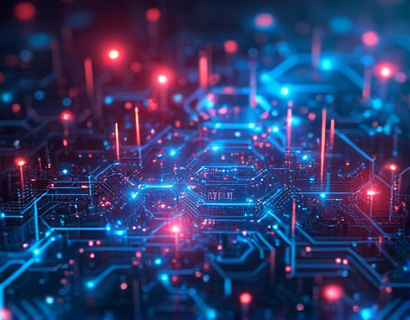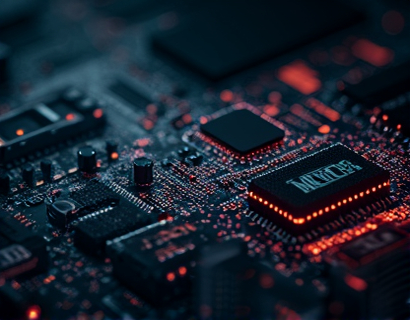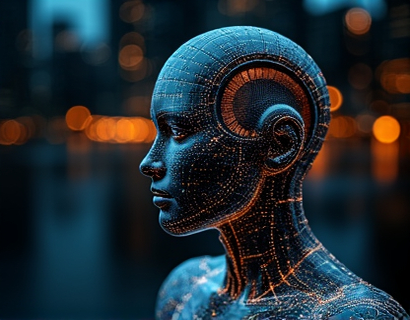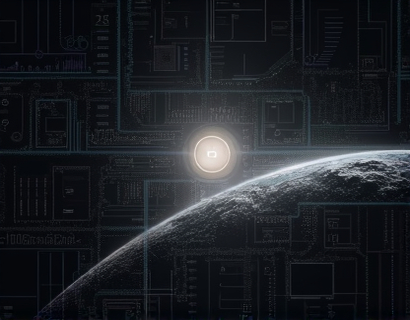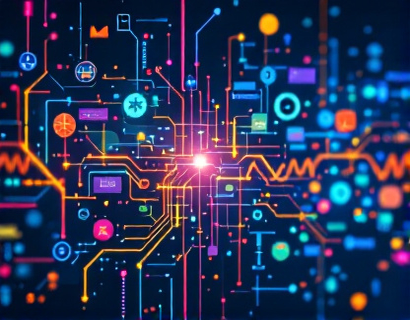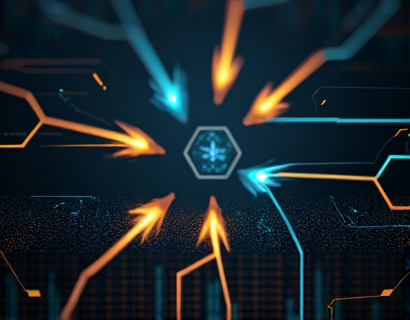Unlocking Productivity: The Convergence of Crypto and AI in Digital Transformation
The intersection of cryptocurrency and artificial intelligence (AI) is giving rise to a new era of digital innovation, one that promises to redefine productivity and user interaction. This convergence is not just a technological curiosity but a transformative force that is reshaping how we approach digital solutions. By leveraging the unique strengths of both crypto and AI, developers and entrepreneurs are creating decentralized applications and services that offer unprecedented levels of efficiency, security, and user empowerment.
The traditional centralized models of digital services are being challenged by decentralized alternatives that harness the power of blockchain technology. Blockchain's inherent transparency, immutability, and decentralization are addressing some of the most pressing issues in digital interactions, such as data privacy, security, and trust. When combined with AI, these decentralized systems become even more potent, enabling smart, autonomous, and self-regulating digital environments.
Decentralized Innovation: The Foundation of Transformation
Decentralized innovation is at the heart of this transformation. Blockchain technology provides a distributed ledger that allows for peer-to-peer transactions without the need for intermediaries. This not only reduces costs and increases efficiency but also empowers users by giving them control over their data and digital assets. Smart contracts, self-executing contracts with the terms directly written into code, are a prime example of how blockchain can streamline processes and eliminate the need for trust in third parties.
AI, on the other hand, brings intelligence and automation to these decentralized systems. Machine learning algorithms can analyze vast amounts of data to identify patterns, make predictions, and optimize operations. When applied to blockchain, AI can enhance the functionality of decentralized applications (dApps) by enabling them to adapt and learn from user interactions, improving their performance over time.
Enhanced Productivity through Decentralized Tools
The synergy of crypto and AI is leading to the development of tools that significantly enhance productivity. For instance, decentralized cloud storage solutions powered by AI can optimize data storage and retrieval, ensuring that files are securely stored and easily accessible. These systems can automatically manage storage resources, scale as needed, and even predict and prevent data loss through intelligent monitoring.
Another area where this synergy shines is in project management and collaboration. Decentralized platforms that use AI to analyze team dynamics and project progress can provide real-time insights and recommendations to improve workflow and productivity. These platforms can automate routine tasks, such as scheduling and task assignment, allowing team members to focus on higher-value activities.
User-Centric Design and Decentralized Identity
The user experience is a critical aspect of these decentralized solutions. AI-driven personalization ensures that applications adapt to individual user preferences and behaviors, creating a more intuitive and efficient interaction. Decentralized identity solutions, powered by blockchain and AI, allow users to manage their digital identities securely and privately. This not only enhances privacy but also simplifies the authentication process across different platforms and services.
Decentralized identity systems can eliminate the need for multiple usernames and passwords, reducing the risk of data breaches and enhancing user control over personal information. AI can further enhance these systems by detecting and preventing fraudulent activities, ensuring that only authorized users access sensitive data and services.
Security and Trust in Decentralized Ecosystems
Security is a paramount concern in any digital solution, and the combination of crypto and AI offers robust solutions to enhance security and build trust. Blockchain's cryptographic techniques ensure that data is tamper-proof and transparent, while AI can detect and mitigate potential security threats in real-time. Machine learning algorithms can analyze network traffic and user behavior to identify anomalies and prevent attacks before they occur.
Moreover, the decentralized nature of these systems reduces the risk of single points of failure. Since data and computations are distributed across a network of nodes, the system remains resilient even if some nodes fail or are compromised. This redundancy and distributed consensus mechanism provide a high level of security and reliability.
Economic Incentives and Decentralized Markets
The economic incentives provided by cryptocurrency play a crucial role in these decentralized ecosystems. Tokenization, the process of representing assets as digital tokens on a blockchain, can create new opportunities for monetization and reward systems. In decentralized markets, users can earn tokens for contributing value, such as providing computational power, storing data, or participating in governance decisions.
AI can optimize these markets by analyzing supply and demand dynamics, predicting price movements, and matching participants efficiently. This creates a more fair and efficient economic system where value is distributed based on contribution and utility, rather than centralized control.
Future Prospects and Challenges
The future of decentralized technology and AI-driven solutions is promising, with numerous applications across various industries. From healthcare and finance to education and entertainment, the potential for innovation is vast. However, there are also challenges that need to be addressed, such as scalability, regulatory compliance, and user adoption.
Scalability remains a significant hurdle for blockchain technology, as current networks often struggle to handle high transaction volumes. Research into layer 2 solutions and more efficient consensus mechanisms is ongoing to address this issue. Regulatory frameworks are also evolving to accommodate these new technologies, and clear guidelines will be essential for widespread adoption.
User education and awareness are crucial for driving adoption. As these technologies become more complex, it is important to provide accessible resources and tools that help users understand and leverage their benefits. Community engagement and open-source development can play a vital role in fostering a collaborative and inclusive ecosystem.
Conclusion
The convergence of cryptocurrency and AI is unlocking new possibilities in digital solutions, offering a glimpse into a future where productivity and user interaction are revolutionized. By embracing decentralized innovation, we can create more secure, efficient, and user-centric systems that empower individuals and organizations alike. As this field continues to evolve, staying informed and engaged will be key to harnessing the full potential of these transformative technologies.




